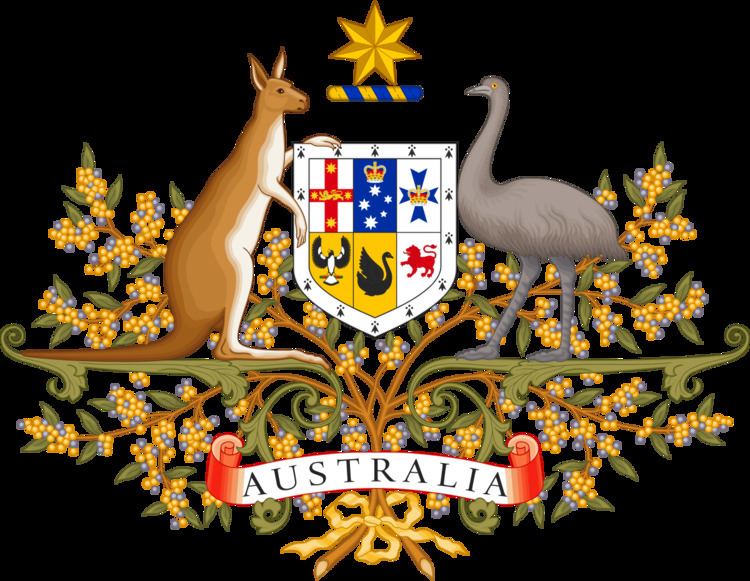Submitted 12 May 2009 Total revenue A$290.6 billion | Parliament 42nd | |
 | ||
Submitted to | ||
The 2009 Australian federal budget for the Australian financial year ended 30 June 2010 was presented on 12 May 2009 by the Treasurer of Australia, Wayne Swan, the second federal budget presented by Swan, and the second budget of the first Rudd Government. Swan commented that the budget would be tougher than in previous years. "Projected government revenue has fallen by $200 billion since the last budget because of the global economic crisis."
Contents
- Deficit
- Rising unemployment
- Moderately decreased growth
- Revenue mix
- Taxation
- Expenditure mix
- General government
- Social security and welfare
- Initiatives
- Infrastructure transport and energy
- Education
- Defence
- Health
- Opposition and crossbench response
- Reception
- References
There were many allegedly planned leaks which released a number of headline details and bad news in the weeks beforehand.
Deficit
Rising unemployment
Moderately decreased growth
Revenue mix
A $210 billion decrease in revenue was forecast over the next four years, with the 2009-10 deficit expected to be in excess of $50 billion. Labor suggested that the decrease in revenue, brought about by the global financial crisis, was the primary reason for the deficit.
Taxation
Labor budgetary policy on taxation is to keep it below the 2007-2008 level of 24.7% of GDP over the medium term. After taking into account regulatory changes to eliminate "tax minimisation" through employee share schemes, taxation receipts come in at 22% of GDP. The government has not indicated whether it will be modifying its target for 2010–2011, in light of the forecast contraction in growth.
Expenditure mix
Overall expenditure is expected to increase in 2009/2010 by 1.6% of GDP. The key feature of the budget was a third round of spending to provide long-term stimulus. Overall, spending has increased by 4.6% of GDP since the last Howard/Costello budget (2007/2008).
General government
Social security and welfare
Labor budgetary policy separates aged care from other welfare expenditure. The budget saw synchronised changes across the public sector as the government decided to lift the pension age and also moved to lift the superannuation preservation age. Two reports which accompanied the budget, the Pension Review Report and the Henry review on tax strategy, argued the need for a single means test—more comprehensive than testing assets and income separately, standard practice since 1985—to promote other forms of saving.
Initiatives
Infrastructure, transport and energy
The government will invest more than $22 billion for "Nation Building Infrastructure" in transport, broadband, clean energy, universities and health care.
Education
Defence
Health
Initiatives
Opposition and crossbench response
Shadow Treasurer Joe Hockey challenged the government's projections for a return to budget surplus, claiming that growth projections were above historical trends. The Leader of the Opposition, Malcolm Turnbull, called on the Prime Minister to reveal the full economic modelling used in the Treasury outlook.
In his formal response to the budget, Turnbull announced opposition to the reduction in private health insurance rebates, proposing that the funds be sourced by raising the tax on cigarettes by 3 cents instead. The Greens criticised the budget for supporting the coal industry and indicated their support for Turnbull's cigarette tax proposal. Family First Senator Steve Fielding criticised the government for breaking its election promise to maintain private health insurance rebates.
Reception
Reaction from business lobby groups was mixed, with the Australian Chamber of Commerce and Industry and the Australian Industry Group supporting the capital spending but critical of the plan to return to budget surplus. National Seniors Australia and ACOSS welcomed the increase to age pensions, but raised concerns that sole parents, the young and unemployed had been ignored. International ratings agencies Standard & Poor's, and Fitch Group, said that the budget did not risk Australia's AAA rating as the country's finances remained sound.
An ongoing Westpac survey found that consumer confidence dropped as a result of the budget. Surveyed consumers anticipated that stimulus payments in the form of cash bonuses were no longer an option for the government, and their expectations of a turnaround during the following five years dwindled. The fall is equal to about half of last month's gain.
Come 22 May, as senators and Treasury officials prepared for the Senate estimates committee hearings on the budget, the government faced strident criticism from chief executives, unions and small companies over the changes to employee share schemes.
